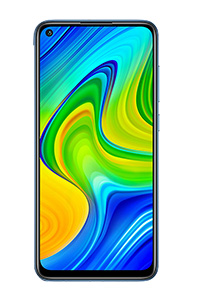
HTC Desire Eye
21990 Tk
21990 Tk

Xiaomi Redmi Note 9
19999 Tk
19999 Tk
visual : HTC Desire Eye Vs Xiaomi Redmi Note 9
HTC Desire Eye
Xiaomi Redmi Note 9
Software
os
Android M OS 6.0
Android 10, MIUI 11
Hardware
Memory
RAM
2 GB
4 GB
ROM
16 GB
128 GB
expandable
128 GB
512 GB
Processor
CPU
Octa-core (2x2.0 GHz Cortex-A75 & 6x1.8 GHz Cortex-A55)
GPU
Adreno 330
Mali-G52 MC2
SoC
Qualcomm Snapdragon 801
MediaTek Helio G85 (12nm)
number of cores
4core
8core
speed
2.3 GHz Krait 400
Camera
features
LED flash, HDR, panorama
primary
13 MP AF
Quad:
48 MP, f/1.8, 26mm (wide), 1/2.0", 0.8m, PDAF
8 MP, f/2.2, 118 (ultrawide), 1/4.0", 1.12m
2 MP, f/2.4, (macro), AF
2 MP, f/2.4, (depth)
48 MP, f/1.8, 26mm (wide), 1/2.0", 0.8m, PDAF
8 MP, f/2.2, 118 (ultrawide), 1/4.0", 1.12m
2 MP, f/2.4, (macro), AF
2 MP, f/2.4, (depth)
secondary
13 MP AF
13 MP, f/2.3, 29mm (standard), 1/3.1", 1.12m
video
1080p@30fps
Battery
Stand By
538 Hour(3G)
Talk Time
20 Hour(3G)
capacity
2400mAh
5020mAh
charging
Fast charging 18W, Reverse charging 9W
type
Li-po (non-removeable)
Li-Polymer (non-removable)
Design
Display
IPS LCD 1080x1920 pixels (~424 ppi pixel density)
IPS LCD capacitive touchscreen, 16M colors
Weight
154 gm
199 gm
build
Glass front (Gorilla Glass 5), plastic frame
dimension
162.3 x 77.2 x 8.9 mm
protection
Corning Gorilla Glass 5, 450 nits typ. brightness (advertised)
resolution
1080 x 2340 pixels, 19.5:9 ratio (~395 ppi density)
screen
5.2"
6.53"
Connectivity
GPS
Yes, with A-GPS, GLONASS, GALILEO, BDS
NFC
Yes (market/region dependent)
USB
microUSB v2.0
2.0, Type-C 1.0 reversible connector
bluetooth
v4.0, A2DP, apt-X
5.0, A2DP, LE
infrared port
Yes
internet
2G/3G/4G/LTE
wifi
802.11 b/g/n
Wi-Fi 802.11 a/b/g/n/ac, dual-band, Wi-Fi Direct, hotspot
Audio
radio
FM Radio
Others
sensors
Accelerometer, gyro, proximity, compass, GPS, A-GPS
Fingerprint (rear-mounted), accelerometer, gyro, proximity, compass
